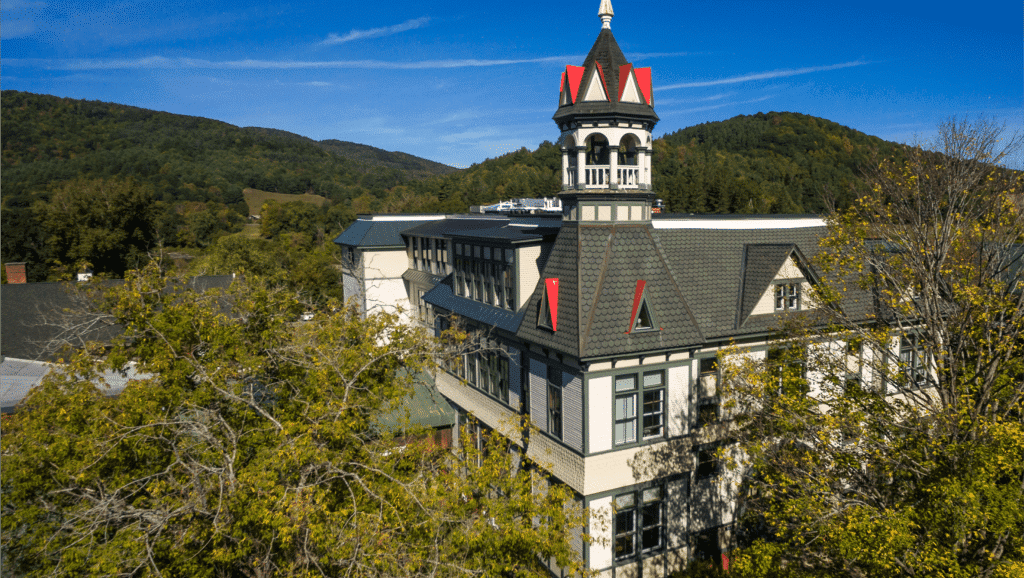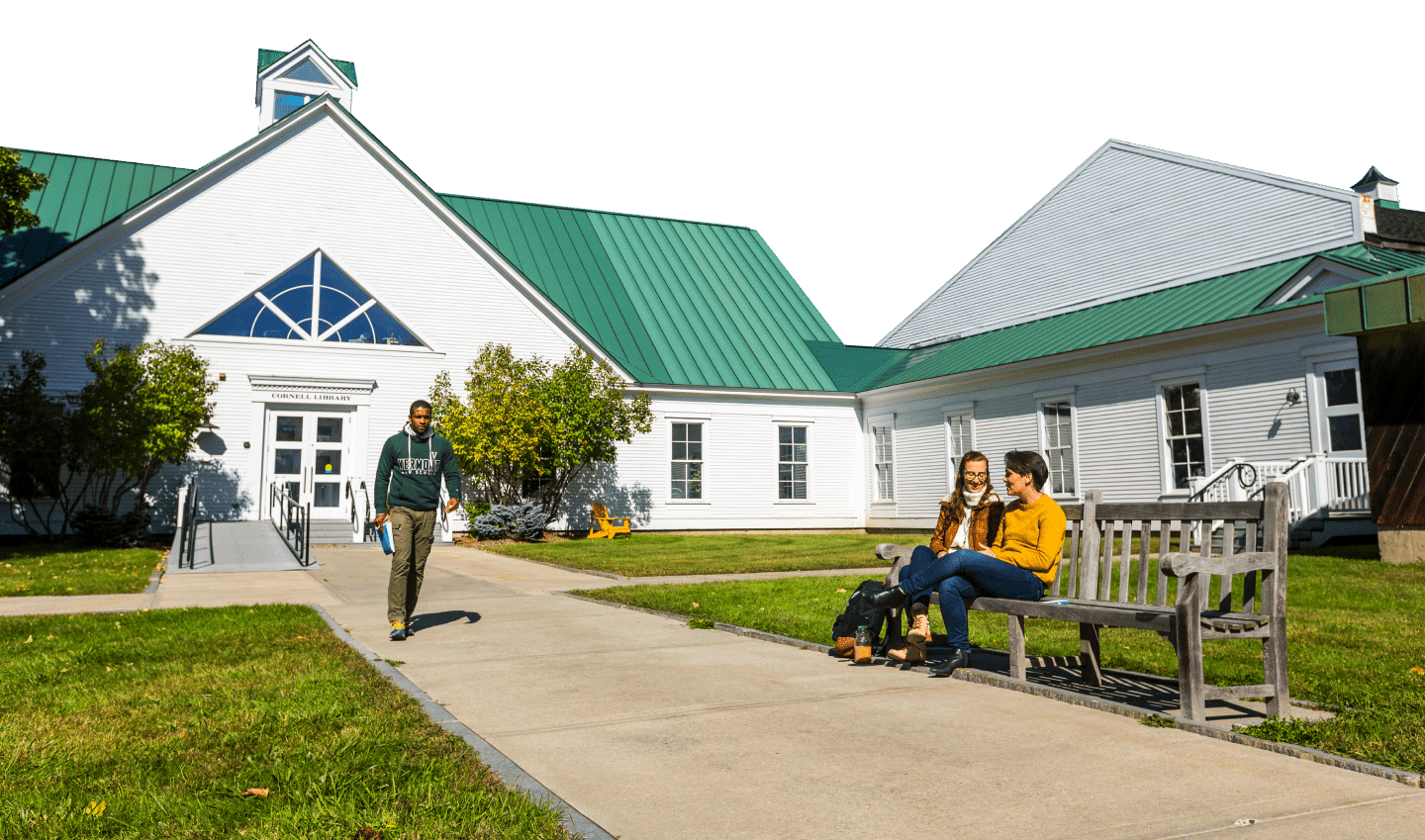About Vermont Law and Graduate School

Our Mission Statement
“To educate students in a diverse community that fosters personal growth and that enables them to attain outstanding professional skills and high ethical values with which to serve as lawyers and environmental and other professionals in an increasingly technological and interdependent global society.”
Our Motto
Law for the community and the world.

History
Vermont Law and Graduate School – formerly Vermont Law School (VLS) – was established in 1972 and held its first classes in the summer of 1973 with 113 students in what was then known as the old South Royalton schoolhouse (and today is Debevoise Hall).
The law school hadn’t yet been approved by the American Bar Association—a factor of great concern, since most states require graduation from an ABA-approved law school for admission to the bar. In December 1973, VLS was certified by the Vermont Board of Education as an institution of higher learning. When the news came that the provisional ABA approval came in February 1975, bells rang and classes were canceled.
The charter class of VLGS graduated in the spring of 1976, receiving full approval from the ABA in 1978. By 1980, the school earned accreditation from the New England Association of Schools and Colleges (NEASC), and the following year, it became a member of the Association of American Law Schools (AALS).
The Environmental Law Center opened its doors in 1978 with eight master’s degree students. Now the center offers the most comprehensive environmental law and policy curriculum in the nation. Its program is consistently top-ranked by U.S. News & World Report and confers both the Master of Environmental Law and Policy (now Master of Climate and Environmental Policy) degree and the Master of Laws in Environmental Law (LLM) degree.
-
1979
In 1979, the South Royalton Legal Clinic was established to serve the legal needs of the area’s low-income residents. Student clinicians provide help for persons otherwise unable to afford counsel in areas such as family law, juvenile law and children’s rights, civil rights and civil liberties, consumer protection, bankruptcy, and immigration. Throughout the 2009-2010 academic year, adhering to state and federal student practice regulations, 53 of our student clinicians represented clients in more than 220 court and administrative hearings across 21 different venues.
-
1987
In 1987, Vermont Law and Graduate School established the General Practice Program (GPP), which rapidly grew. Recognizing its pivotal role to VGLS, the GPP was honored with the prestigious E. Smythe Gambrell Award for Professionalism by the American Bar Association. This national award is presented to law schools and other organizations in recognition of advancing professionalism in the practice of law.
-
1991
In 1991, the Julien and Virginia Cornell Library opened. Today, the library boasts an impressive collection of 149,000 titles and over 349,000 volumes, offering wireless and remote access to its resources. Staffed by a team of expert information professionals, the library excels in providing teaching support, reference services, and curating legal materials.
The James L. and Evelena S. Oakes Hall building was constructed and dedicated in 1998. Incorporating environmentally friendly “green building” techniques along with the latest classroom technology, Oakes Hall stands as an energy-efficient and modern teaching facility.
-
2005
In 2005 the historic South Royalton schoolhouse—where the first Vermont Law and Graduate School class studied in 1973—underwent a renovation and was renamed as Debevoise Hall, in honor of Thomas M. Debevoise, one of the law school’s earliest deans. The renovation made sure to balance historical preservation with design efficiency and environmental awareness. Debevoise Hall was the first LEED Silver Certified building in Vermont. Today, the Hall continues to serve as classroom space and now also houses administration offices, the Environmental Law Center, and the Yates Common Room—a gathering place that serves as the campus’ “living room.”
-
2012
In 2012, the Center for Legal Services, South Royalton Legal Clinic, and Environmental and Natural Resources Legal Clinic found a new home in the revitalized building listed on the National Register of Historic Places. Located on the edge of campus in the heart of the South Royalton Historic District, the building was purchased by Vermont Law and Graduate School in 2009 after having served the South Royalton community as a commercial site since 1869. The new building is the 16th of 19 historic properties on the VLGS campus that have been repurposed, continuing our tradition of undertaking award-winning historic preservation projects that are also models of energy efficiency. The building also includes the campus book and coffee shop. On May 21, 2012, it had its dedication ceremony with remarks given by Vermont Governor Peter Shumlin and Vermont Supreme Court Chief Justice Paul Reiber.
-
2013
In 2013, we celebrated the grand opening of a new fitness center for students, faculty, and staff. The 4,100-foot, one-story fitness center includes a spinning and yoga studio, as well as an exercise room with a mix of free weights and cardiovascular and weight training machines, including new treadmills, ellipticals, and bikes for spinning. The facilities also include men’s and women’s locker rooms with showers and restrooms, and storage for yoga mats and clothing. In addition, equipment from the VLGS student gear shed—which includes kayaks, canoes, tents, fishing poles, mountain climbing equipment, cross country skis, poles, boots, and ice skates—has been relocated to a new storage facility adjacent to the fitness center.
The fitness center has a contemporary, environmentally sustainable design compatible with the historic architecture of South Royalton and Vermont Law and Graduate School. Naturally sited on the slope of a hill to take advantage of constant soil temperatures, the VLGS fitness center is highly energy efficient and uses low-maintenance materials with a natural feeling. The roof, walls, and high-performance windows are extensively insulated, and the southern roof has the potential for photovoltaics. The interior design features bamboo flooring, high-efficiency lighting, and natural cross-ventilation. Best management practices for storm-water runoff, including permeable pavement and rain gardens, have been followed. Large windows with a high R-value exist throughout the building and provide a view of the White River.